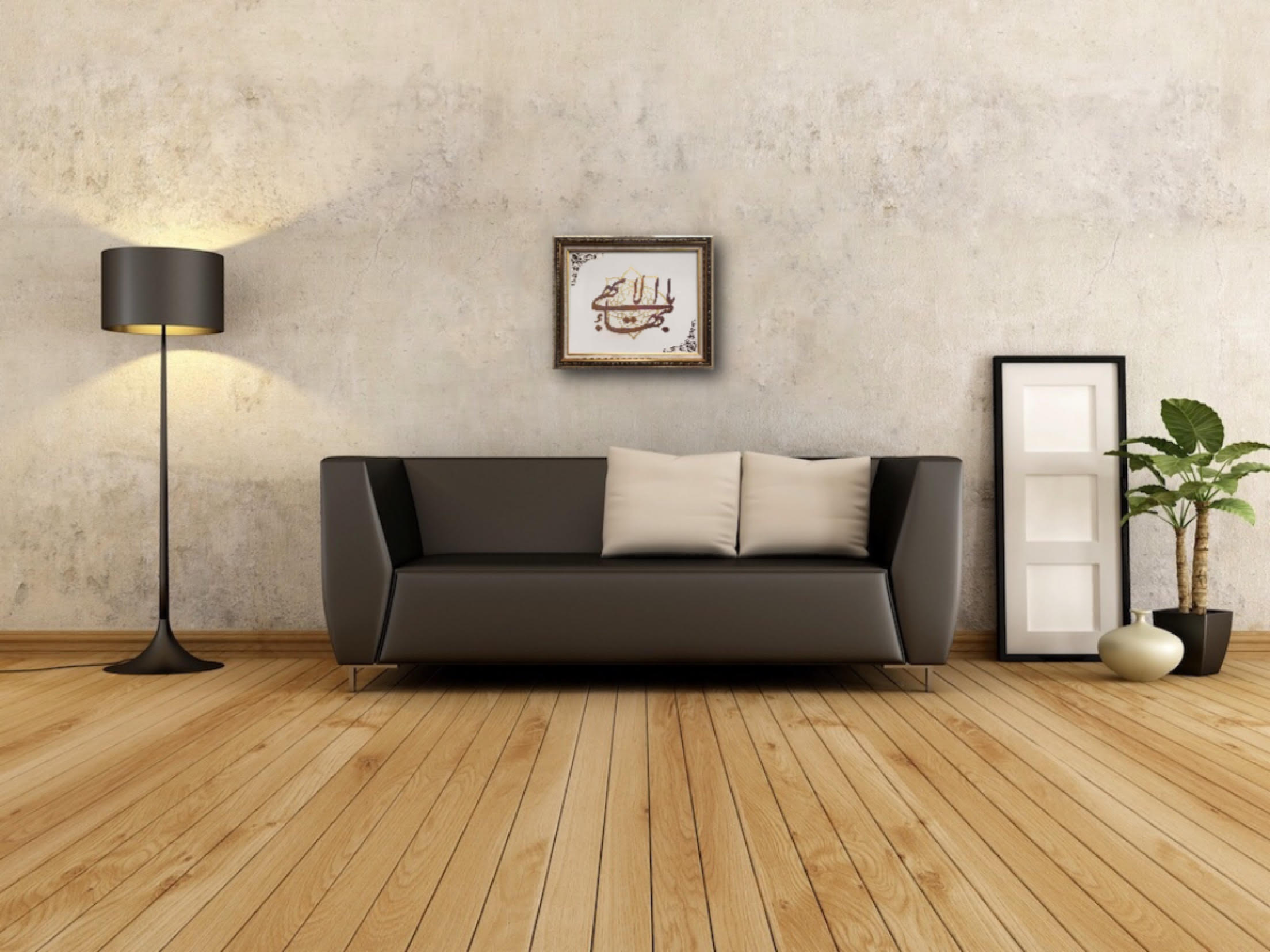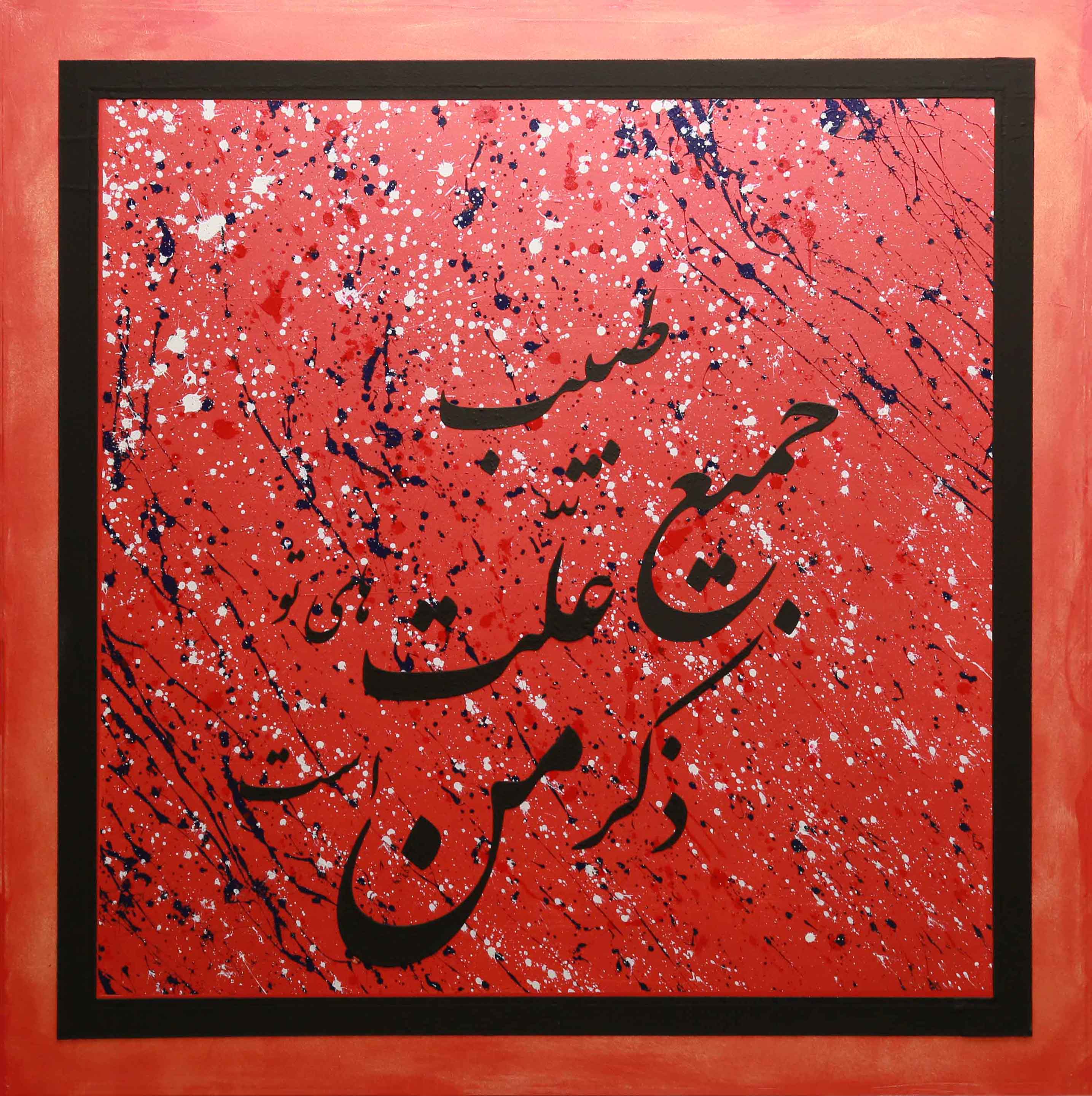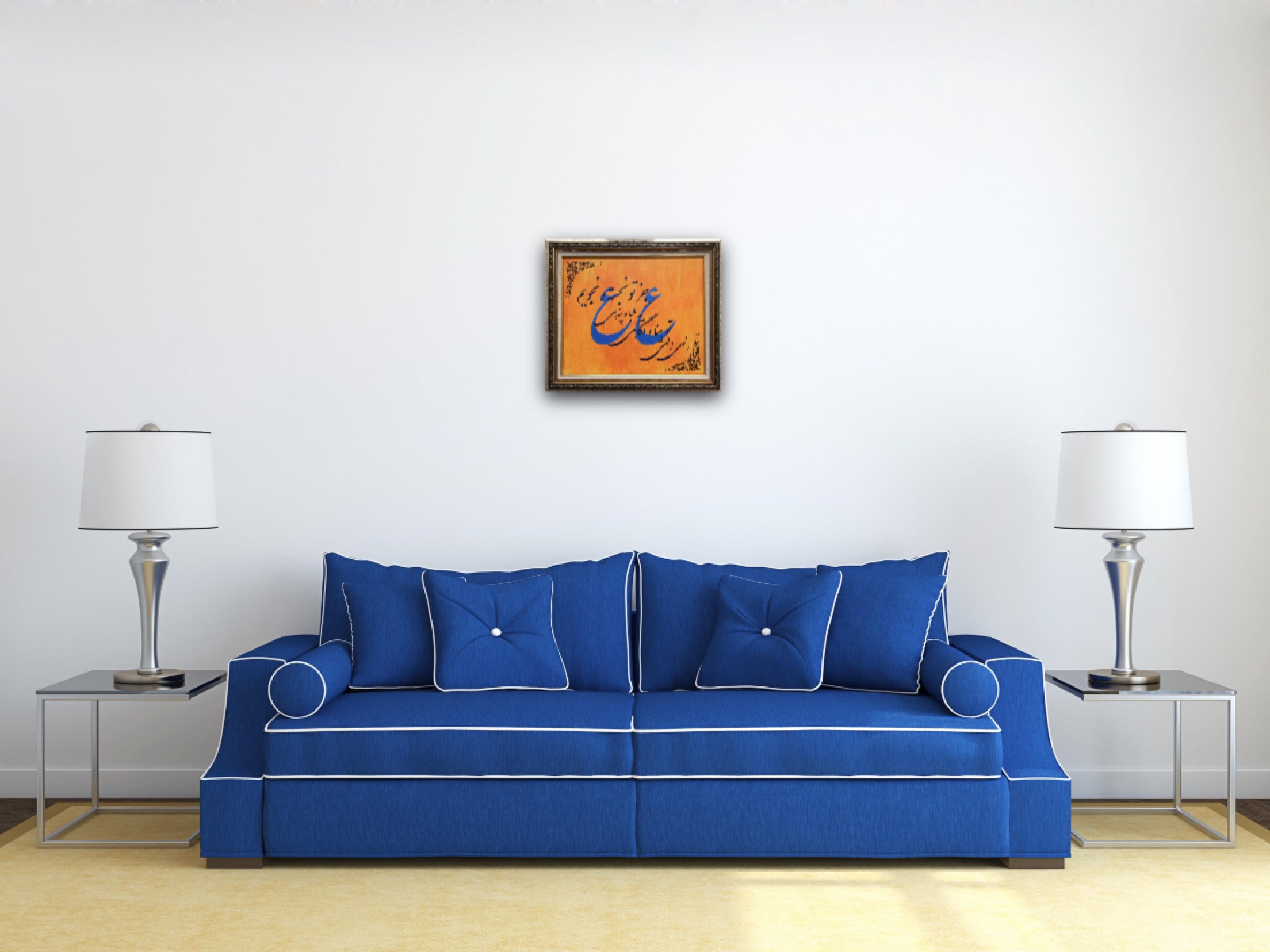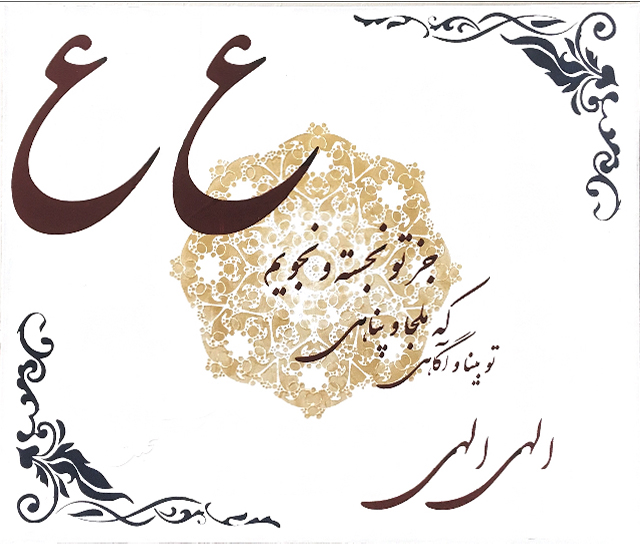



"Yá Bahá'u'l-Abhá"
"Yá Bahá'u'l-Abhá" means "O Glory of the All-Glorious." Mishkín-Qalam, an early Bahá'í calligrapher, created a beautiful rendering of this invocation that is displayed in Bahá'í homes everywhere. It adorns the domed ceiling and doorway arches of the Bahá'í House of Worship in Wilmette, Illinois.
When I painted "Yá Bahá'u'l-Abhá," I wanted to capture more than the phrase. I wanted to convey the feeling behind it. Every brushstroke became an act of remembrance, a quiet prayer translated into form and color. The balance between gold and brown tones represents both radiance and humility: light that uplifts but does not blind.
For me, this phrase is not only an invocation but a reminder of beauty, unity, and surrender. It fills the space it adorns with serenity, the same serenity I feel while painting it.
Acrylic and pigment paint on canvas 20"x16"


The Greatest Name Symbol
'Abdu'l-Bahá designed a calligraphic symbol that incorporates Arabic letters in "Bahá" into a visual representation of the relationship among the worlds of God, of Revelation, and of humanity. The top and bottom horizontal lines—each a stylized doubling of the Arabic letter "h"—represent respectively the world of God and the world of creation. In between, a stylized letter "b" represents the world of the Manifestations of God. That letter is repeated vertically to represent the role and station of the Manifestations in "joining the world of the Creator to that of His creation."
Whenever I paint The Greatest Name Symbol, I feel as though I'm tracing a bridge between worlds: one line connecting heaven and earth. The more I study its form, the more I see how geometry becomes devotion. Every curve carries a message: order, harmony, and unity.
As my brush moves across the canvas, I imagine those who will one day sit before it, perhaps unaware of its depth, yet feeling a quiet stillness settle in. That stillness is what I try to preserve: a moment where art, faith, and contemplation meet.
Acrylic and pigment paint on canvas 20"x16"

The Healer of All Ills
The text written on the canvas is in Persian and its translation in English is "The healer of all thine ills is remembrance of Me." This painting is inspired by one of the passages from The Hidden Words of Bahá'u'lláh. When I began The Healer of All Ills, I wanted to translate remembrance into color. The verse, "The healer of all thine ills is remembrance of Me," felt alive, like a quiet fire that consumes sorrow and awakens hope. I chose red because it speaks of both suffering and renewal, of the heart that burns but is also healed through love. Each layer of paint became a prayer. Each texture, a reminder of struggle transformed into beauty. This piece, for me, is not only an artwork but a companion in moments of weariness, whispering that within every hardship lies a door to healing through remembrance.
Acrylic and pigment paint on canvas 36"x36"




Persian Prayer
Persian calligraphy of a prayer by 'Abdu'l-Bahá. The English translation is "O God, my God! Thou seest me, Thou knowest me; Thou art my Haven and my Refuge. None have I sought nor any will I seek save Thee." The two blue letters in the background are Arabic Letter for "A" which 'Abdu'l-Bahá used as His signature.
This prayer by 'Abdu'l-Bahá has always felt deeply intimate to me: like a quiet conversation between the soul and its Creator. When I painted it, I imagined the first light of morning filtering through a window, that moment before words turn into speech when the heart simply listens.
The orange background symbolizes divine warmth, a reminder that even in times of uncertainty, there is radiance behind the veil.
Acrylic and pigment paint on canvas 20"x16"
My calamity is My providence
This calligraphy is inspired by one of the Arabic Hidden Words: "O SON OF MAN! My calamity is My providence, outwardly it is fire and vengeance, but inwardly it is light and mercy. Hasten thereunto that thou mayest become an eternal light and an immortal spirit. This is My command unto thee, do thou observe it."
Each time I return to this passage, I find a new layer of peace hidden beneath its fire. When I painted it, I wanted to capture the moment when pain begins to transform: when what once felt like loss begins to reveal mercy.
The red background carries both intensity and warmth, symbolizing trials that refine rather than destroy. The calm script, floating gently within that field of color, represents acceptance: the soul learning to trust the unseen wisdom behind every hardship.
This piece reminds me that beauty often emerges from contrast: that light gains its meaning only through shadow, and that divine love is sometimes disguised as challenge.
Acrylic and pigment paint on canvas 20"x16"